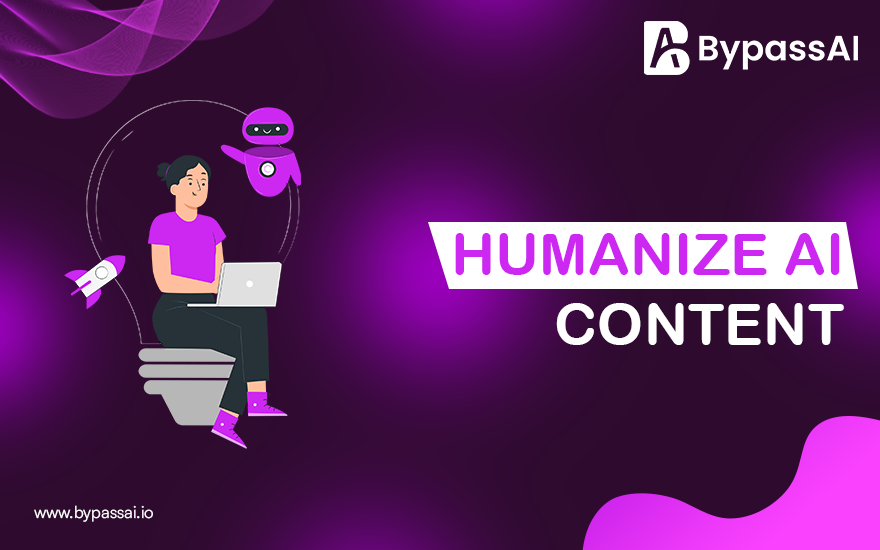Introduction
In today’s rapidly evolving digital ecosystem, artificial intelligence (AI) plays a central role in content creation, customer interaction, and automation. However, despite its capabilities, AI often lacks the emotional intelligence, tone, and subtlety that define authentic human communication. The result? Content that may be accurate but feels robotic and impersonal. Enter Humanize AI – the transformative approach to refining AI-generated content, making it feel genuinely human, and most importantly, building trust in the digital world.
What is Humanize AI?
The technique of modifying machine-generated text to resemble natural human language patterns is known as humanize AI. It blends technology and creativity, adding emotional tone, personal voice, and contextual nuance to content that was originally created by AI.
Improving relatability, readability, and trustworthiness is Humanize AI’s main goal. Whether you’re a marketer, educator, writer, or business owner, content that feels “real” establishes a stronger connection with readers – boosting engagement, loyalty, and trust.
How Does It Work?
At its core, Humanize AI operates through a combination of linguistic analysis, semantic rewriting, and natural language adaptation. Tools designed to humanize AI text scan for indicators that make writing feel artificial – such as overly structured syntax, repetitive sentence patterns, and lack of emotional tone. These tools then adjust and rephrase the content to feel more organic and reader-friendly.
Let’s simplify it into a three-step procedure:
Step 1: Enter the Text
Begin by entering your AI-generated content into a Humanize AI platform. This could be content from tools like ChatGPT, Jasper, Copy.ai, or any other language model. Make sure the content is coherent and aligned with your topic before submission.
Step 2: Click on the Button “Humanize AI”
With one click on the “Humanize AI” button, the tool gets to work. It identifies robotic phrasing, awkward transitions, and impersonal tone, then transforms these into fluid, human-like language. The result is content that sounds like it came straight from a real person, not an algorithm.
Step 3: View the Result
The final step reveals a fully humanized version of the text. This new content will display more personality, smoother transitions, and natural expression. Depending on the tool, some platforms may offer customization options to tweak tone (e.g., friendly, professional, persuasive) or adjust sentence complexity.
Benefits of AI Humanizer
1. Builds Authentic Trust
In a landscape where consumers are bombarded with generic AI content, humanized writing stands out. It resonates more deeply, conveys sincerity, and helps brands and individuals build credibility with their audience.
2. Boosts SEO and Engagement
Search engines favor content that keeps users engaged. Humanized AI content improves social sharing, lowers bounce rates, and lengthens dwell times – all critical indicators of SEO performance.
3. Bypasses AI Detection
Many institutions and publishers use AI detection tools to flag machine-written content. Humanizing your text helps you pass these filters by making your work appear authentically crafted by a human.
4. Saves Time Without Sacrificing Quality
Humanize AI helps to close the gap between personalization and automation. You get the speed of AI with the emotional intelligence of human creativity, enabling high-volume, high-quality content production.
Features of Humanize AI Text
1. Enhanced Emotional Tone
Humanized content goes beyond facts and data—it infuses emotion, which is key to building reader empathy and trust.
2. Natural Flow and Rhythm
Instead of repetitive and mechanical sentences, humanized text follows a conversational rhythm, similar to how real people speak and write.
3. Idiomatic and Contextual Language
Humanized AI incorporates colloquialisms, idioms, and real-world references, giving content a local, familiar feel.
4. Improved Readability
The structure, tone, and vocabulary are adapted for clarity and flow, ensuring your audience remains engaged and informed.
Application of Humanize AI
1. Content Marketing and Blogging
Marketers use AI to scale content creation but rely on Humanize AI to add the human touch that drives conversions and trust.
2. Academic and Professional Writing
Researchers and students can utilize AI for initial drafts, then humanize the output to ensure it meets academic tone and bypasses AI detection.
3. Customer Service Automation
Chatbots and virtual assistants powered by Humanize AI provide more empathetic and engaging interactions, enhancing customer satisfaction.
4. Email Marketing and Newsletters
AI can write emails fast, but humanization ensures your communication feels personal, genuine, and less spammy.
5. Social Media Content
With platforms like Instagram, Twitter, and LinkedIn favoring authentic voice, Humanize AI helps create relatable posts that drive likes, shares, and comments.
Conclusion
As AI continues to revolutionize how we create and interact with content, the importance of humanizing AI becomes increasingly clear. Authenticity, trust, and emotional connection are what separate great content from forgettable noise. Bypass AI is not just a tool – it’s a necessity in building meaningful digital relationships in a world where machines dominate the conversation. By leveraging the power of humanization, we can elevate AI content, ensure it feels natural, and establish genuine trust with our audiences.


